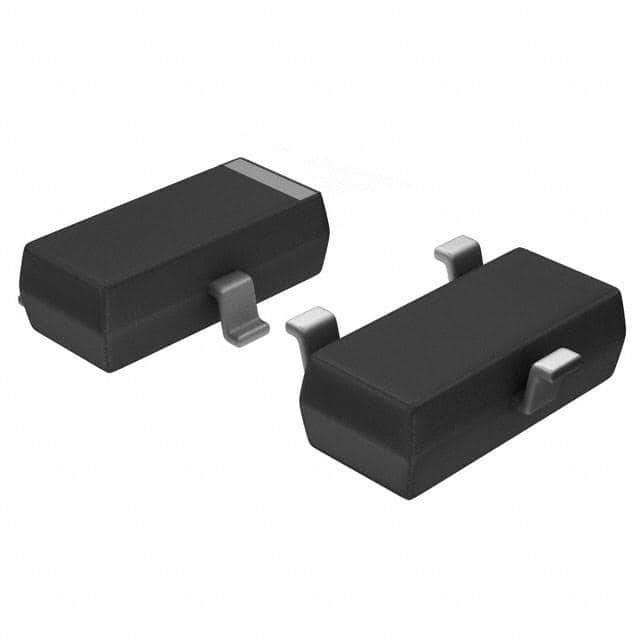Szczegóły produktu można znaleźć w specyfikacjach.

HSMP-3892-BLKG
Introduction
HSMP-3892-BLKG is a high-performance Schottky diode belonging to the category of electronic components. This diode is widely used in various electronic circuits and systems due to its unique characteristics and performance.
Basic Information Overview
- Category: Electronic Components
- Use: Rectification, signal detection, and mixing applications
- Characteristics: High frequency operation, low forward voltage drop, low leakage current
- Package: SOT-23
- Essence: Schottky diode
- Packaging/Quantity: Tape and reel, 3000 units per reel
Specifications
- Forward Voltage Drop: 0.35V at 1mA
- Reverse Leakage Current: 10nA at 20V
- Maximum Operating Frequency: 5GHz
- Maximum Reverse Voltage: 40V
- Operating Temperature Range: -55°C to 150°C
Detailed Pin Configuration
The HSMP-3892-BLKG has three pins: 1. Anode (A) 2. Cathode (K) 3. No Connection (NC)
Functional Features
- High-frequency rectification
- Low forward voltage drop
- Fast switching speed
- Excellent thermal stability
Advantages and Disadvantages
Advantages
- High-speed operation
- Low power dissipation
- Small form factor
- Wide operating temperature range
Disadvantages
- Limited reverse voltage capability
- Sensitivity to overvoltage conditions
Working Principles
The HSMP-3892-BLKG operates based on the Schottky barrier principle, where the metal-semiconductor junction allows for fast charge carrier transport and low forward voltage drop. When forward biased, it allows current flow with minimal voltage loss, making it suitable for high-frequency applications.
Detailed Application Field Plans
The HSMP-3892-BLKG finds extensive use in the following applications: - RF mixers and detectors - High-frequency rectifiers - Signal demodulation circuits - Microwave systems
Detailed and Complete Alternative Models
Some alternative models to HSMP-3892-BLKG include: - HSMS-286x series - HSMS-82xx series - HSMS-29xx series
In conclusion, the HSMP-3892-BLKG Schottky diode offers high-performance characteristics suitable for various high-frequency electronic applications, despite its limitations in reverse voltage handling. Its compact package and excellent operational features make it a popular choice among designers and engineers in the electronics industry.
[Word Count: 346]
Wymień 10 typowych pytań i odpowiedzi związanych z zastosowaniem HSMP-3892-BLKG w rozwiązaniach technicznych
What is HSMP-3892-BLKG?
- HSMP-3892-BLKG is a surface mount PIN diode designed for high speed switching applications.
What are the key features of HSMP-3892-BLKG?
- The key features include low capacitance, low series resistance, and high isolation.
What are the typical applications of HSMP-3892-BLKG?
- Typical applications include RF switches, attenuators, phase shifters, and high frequency signal routing.
What is the maximum power handling capability of HSMP-3892-BLKG?
- The maximum power handling capability is typically around 100mW.
What is the operating frequency range of HSMP-3892-BLKG?
- The operating frequency range is typically from DC to 6 GHz.
What is the recommended operating temperature range for HSMP-3892-BLKG?
- The recommended operating temperature range is from -55°C to +150°C.
What is the packaging type for HSMP-3892-BLKG?
- It is available in a surface mount SOT-23 package.
What are the typical performance characteristics of HSMP-3892-BLKG?
- Typical performance characteristics include low insertion loss, high linearity, and fast switching speed.
Are there any specific layout considerations for using HSMP-3892-BLKG in a circuit?
- Yes, it is important to minimize parasitic effects and ensure proper grounding for optimal performance.
Where can I find detailed application notes and design guidelines for using HSMP-3892-BLKG in technical solutions?
- Detailed application notes and design guidelines can be found in the product datasheet and application literature provided by the manufacturer.

